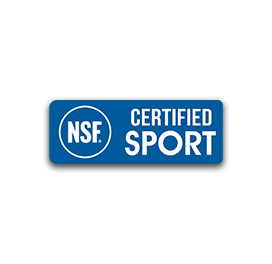This Sports Dietitian handles all those college athletes and still finds time to compete in Triathlons and Marathons
 Massachusetts native Jonathan Tanguay was in Colorado, waiting tables, hiking, and trying to figure out what to do with his undergraduate degree in zoology from Connecticut College, when he took a biochemistry course that bonded his various interests. He graduated from the master’s program in nutritional science at the University of New Hampshire, moved to Texas for a dietetic internship at the University of Houston, and found his dream during a month-long rotation at Texas A&M.
Massachusetts native Jonathan Tanguay was in Colorado, waiting tables, hiking, and trying to figure out what to do with his undergraduate degree in zoology from Connecticut College, when he took a biochemistry course that bonded his various interests. He graduated from the master’s program in nutritional science at the University of New Hampshire, moved to Texas for a dietetic internship at the University of Houston, and found his dream during a month-long rotation at Texas A&M.
“I loved it,” Tanguay says. “That was what I wanted to do. That was the application of all the sports nutrition I had and the love of sport I had and getting involved in something with structure. Every day is unique.”
Tanguay, who was named Texas A&M’s Director of Performance Nutrition in 2010, has a full-time assistant who focuses on Olympic sports while he hands mostly football, baseball and basketball.
“My office is our football weight room,” he says. Four days a week, he works with football players in training, taking their weight, talking to them about fueling and nutrition, and making sure they get recovery smoothies after their workouts. In the afternoons, he works with baseball and basketball players before practice across campus, then returns for football practice and dinner in the new R.C. Slocum Nutrition Center, a dining hall for athletes.
Focus on Sports Nutrition in College
The NCAA’s recent announcement that it is lifting limits on food that schools can provide to athletes, effective Aug. 1, will accelerate a focus on sports nutrition that has swept through leading colleges in recent years, including most members of the Southeastern Conference, the Atlantic Coast Conference, the Big 12, Big 10 and others, Tanguay says.
“In the long run, it’s going to be something that’s really great for the student-athlete,” he says. “They’re bigger, they’re stronger, they’re burning a lot more calories, they’re working out and practicing – that requires more fuel. We were only allowed to feed the team as a team one meal a day outside of competition.”
The old rules left students using a scholarship stipend to buy campus meal plans, off-campus meals, or food to prepare in their apartments – with less-than-optimal attention to nutrition.
“This will allow us to provide them the food that will meet their unique nutritional needs, to help them develop as healthy athletes, and be good for their overall health,” Tanguay says, adding that the students come from a wide spectrum of food experience in their backgrounds.
“It’s definitely challenging,” he says. “You get kids from all walks of life. We’ve got Sports Dietitians here that can really help to be hands-on with the student-athletes and work to educate them about making better choices.” The education includes cooking demonstrations at the Nutrition Education Center and trips to the grocery to learn how to select, store, prepare, and cook food. “Some don’t get it at first, but for someone who’s trying to gain weight or lose weight or reduce their risk for injury, they start coming to me and taking advantage of these resources,” Tanguay says.
Not every approach works with every athlete, but The Right Stuff is a great tool we have from a hydration standpoint.
The Right Stuff is one of the resources. “We use it as part of our hydration protocol” he says. “It’s another tool we have in our belts. There’s a number of sports nutrition products on the market and a number of different approaches. Not every approach works with every athlete, but The Right Stuff is a great tool we have from a hydration standpoint. We use it with a number of different sports.”
Tanguay participates in Iron Mans, half-Iron Mans, and marathons – he set a personal record (PR) at this year’s Boston Marathon – and includes The Right Stuff in his personal regimen. “I start to build my carbohydrate and electrolyte intake a week before the race,” he says. “I’ve got a pre-race routine. For me, it’s been trial and error. I’ve come up with something that works for me. The Right Stuff is part of that.
“I’ve never really had an issue with cramping or GI issues during a race. I like The Right Stuff because it gives you everything you need in one package. Before it came out, we had been looking for something that fit the criteria, and it wasn’t on the market. It’s the volume of electrolytes in a small volume of fluid. This is a small, convenient way to get everything you need that we’ve found works.”






